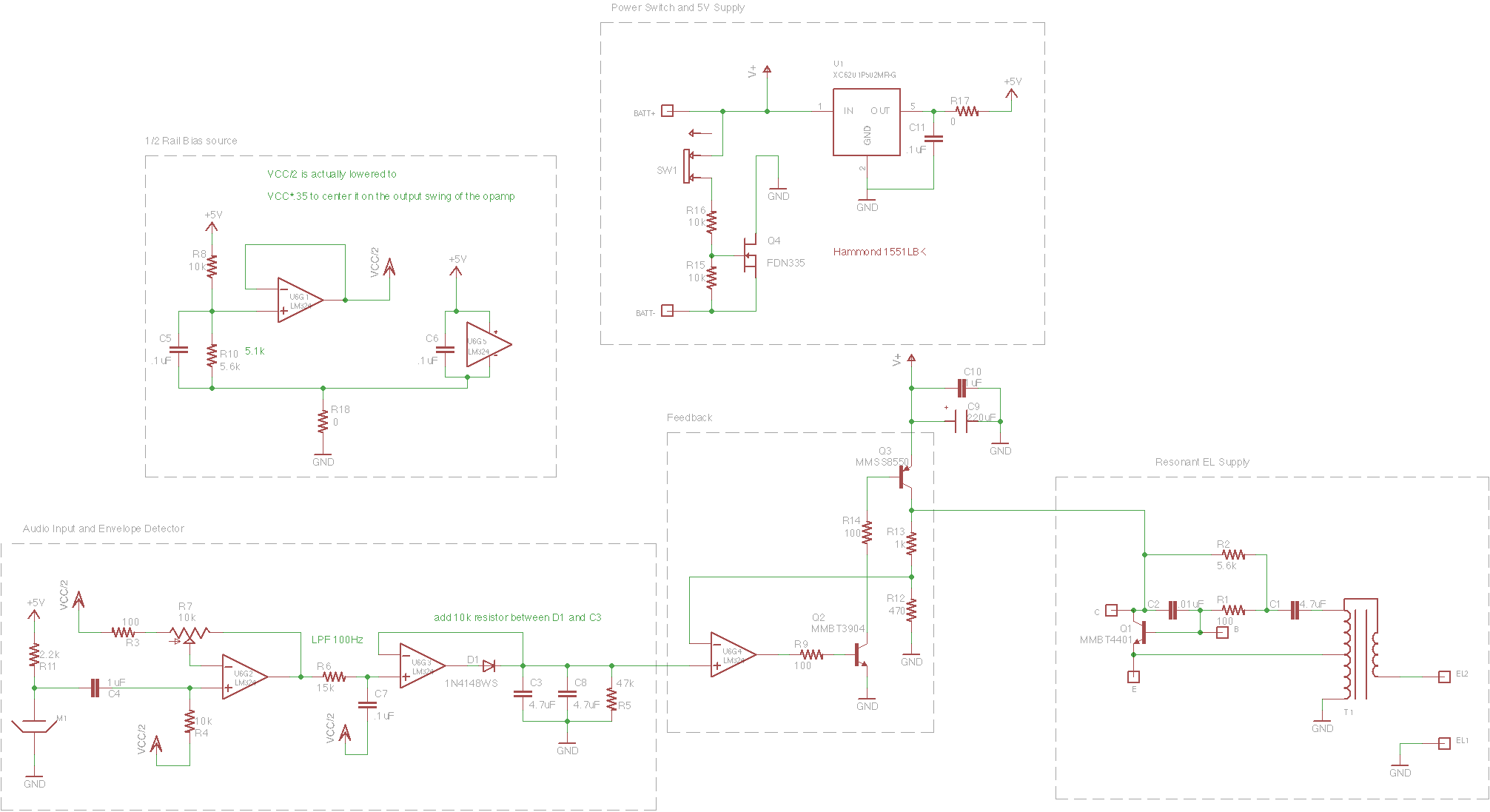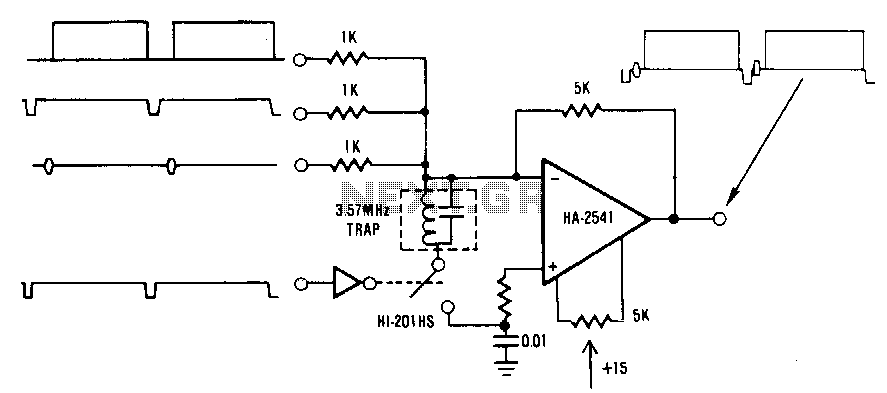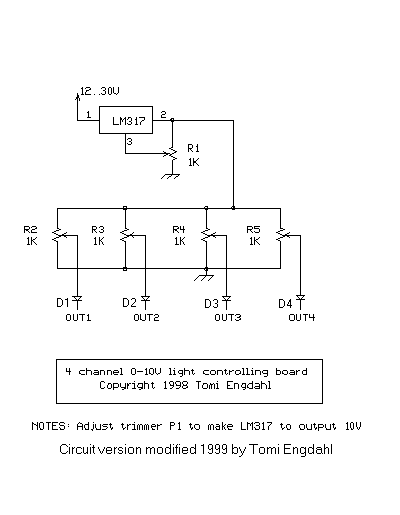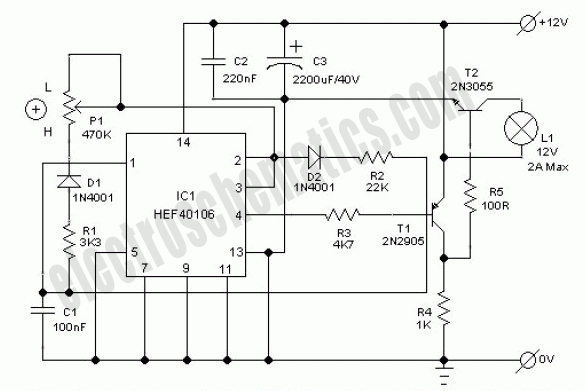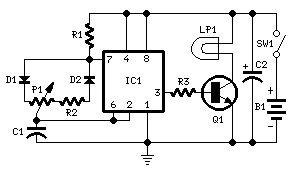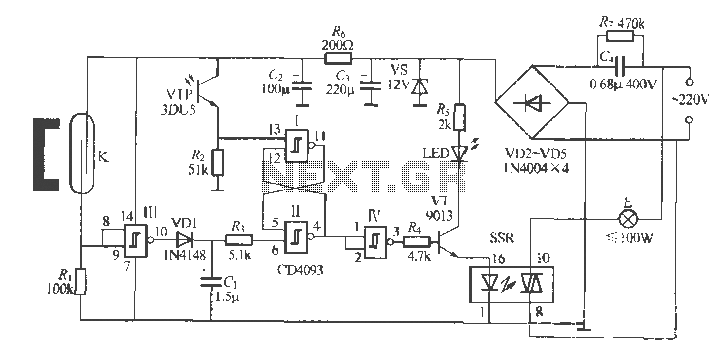
Touch-Controlled Lamp Dimmer
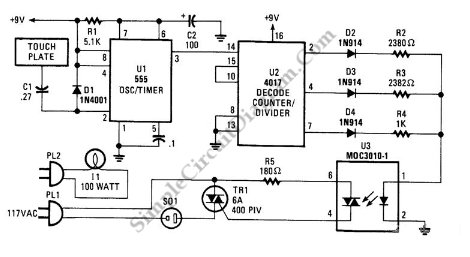
This is a three-mode lamp dimmer circuit with touch control. This circuit can be used to control a lamp in three operation modes: dim, off, and bright. A NE555 timer is utilized in the design.
The three-mode lamp dimmer circuit employs a NE555 timer integrated circuit (IC) configured in a monostable or astable mode, depending on the specific design requirements. The touch control feature allows users to switch between the three states—dim, off, and bright—through a simple capacitive touch interface, eliminating the need for mechanical switches.
In the circuit, the NE555 timer generates a pulse width modulation (PWM) signal that is used to control the brightness of the lamp. The duty cycle of this PWM signal can be adjusted based on the touch input, allowing for smooth transitions between the different brightness levels.
The touch sensor can be implemented using a capacitive touch pad connected to the input of the NE555 timer. When the pad is touched, it triggers the timer to change its output state. The output from the NE555 is then fed into a transistor or a triac, which acts as a switch to control the power delivered to the lamp.
Additional components may include resistors and capacitors that set the time constants for the NE555 timer, ensuring that the response to touch inputs is both quick and reliable. A diode may also be included for flyback protection if an inductive load is used.
Overall, this circuit design provides an efficient and user-friendly method for controlling lamp brightness, enhancing both functionality and aesthetics in various lighting applications.This is a three-modes lamp dimmer circuit with touch control. This circuit can be used to control a lamp in 3 operation modes: dim, off, and bright. A NE555 . 🔗 External reference
The three-mode lamp dimmer circuit employs a NE555 timer integrated circuit (IC) configured in a monostable or astable mode, depending on the specific design requirements. The touch control feature allows users to switch between the three states—dim, off, and bright—through a simple capacitive touch interface, eliminating the need for mechanical switches.
In the circuit, the NE555 timer generates a pulse width modulation (PWM) signal that is used to control the brightness of the lamp. The duty cycle of this PWM signal can be adjusted based on the touch input, allowing for smooth transitions between the different brightness levels.
The touch sensor can be implemented using a capacitive touch pad connected to the input of the NE555 timer. When the pad is touched, it triggers the timer to change its output state. The output from the NE555 is then fed into a transistor or a triac, which acts as a switch to control the power delivered to the lamp.
Additional components may include resistors and capacitors that set the time constants for the NE555 timer, ensuring that the response to touch inputs is both quick and reliable. A diode may also be included for flyback protection if an inductive load is used.
Overall, this circuit design provides an efficient and user-friendly method for controlling lamp brightness, enhancing both functionality and aesthetics in various lighting applications.This is a three-modes lamp dimmer circuit with touch control. This circuit can be used to control a lamp in 3 operation modes: dim, off, and bright. A NE555 . 🔗 External reference
Warning: include(partials/cookie-banner.php): Failed to open stream: Permission denied in /var/www/html/nextgr/view-circuit.php on line 713
Warning: include(): Failed opening 'partials/cookie-banner.php' for inclusion (include_path='.:/usr/share/php') in /var/www/html/nextgr/view-circuit.php on line 713
